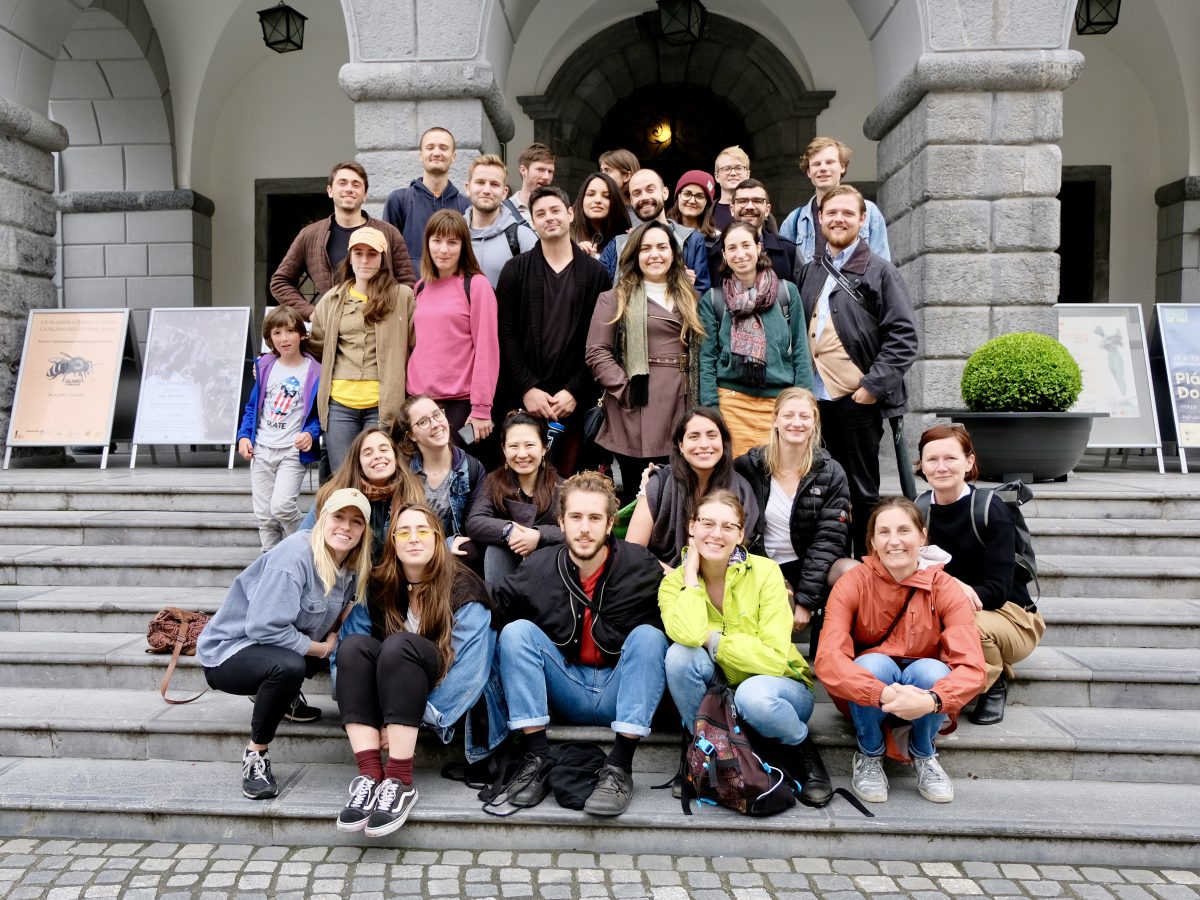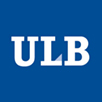Text and photos by Job Zomerplaag
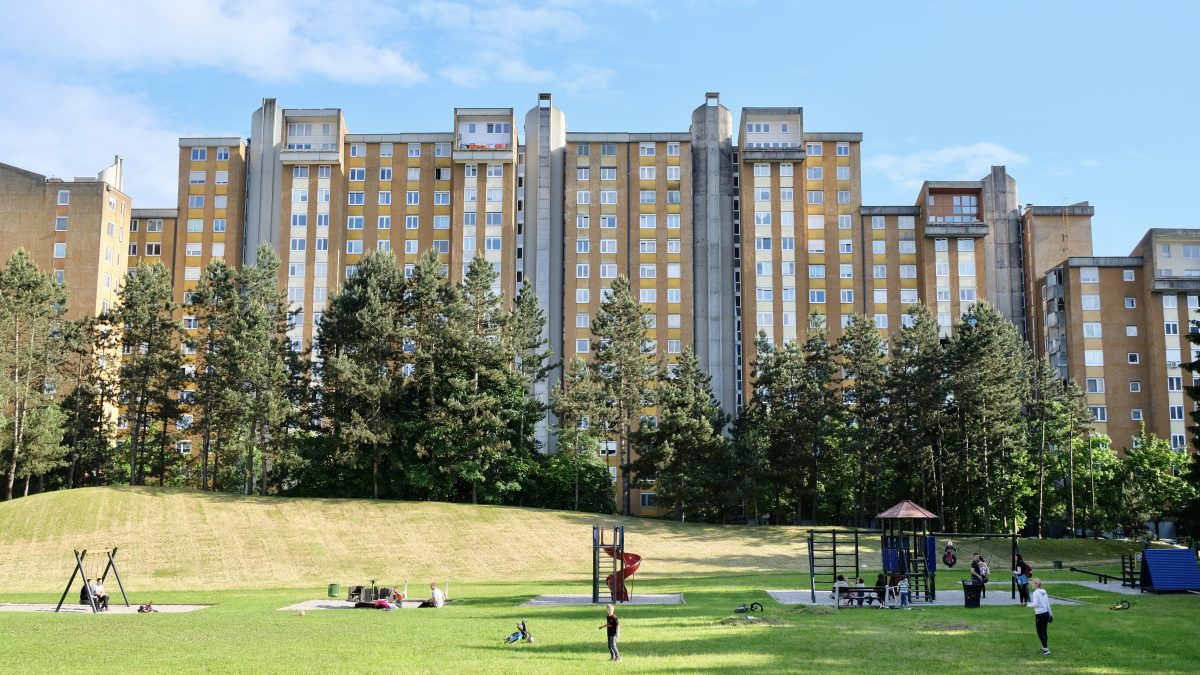
As a small city with a booming, car-free downtown and the first European capital to commit to going zero-waste, Ljubljana aspires to lead the way on redefining the future of cities. But if you look beyond the current and future aspirations of Slovenia’s green capital, one will still find many traces of its socialist past. Therefore, Ljubljana was the perfect destination for a field trip with the aim to critically engage with the concept of the post-socialist city. In this article, cohort 11 reflects on their excursion to Ljubljana and Kranj.
From May 30th to June 1st, 4CITIES cohort 11 traveled to Slovenia to visit projects and organizations that are concerned with the topics of sustainable urban regeneration, social innovations and shifting spatial identities. The multi-day trip was organized as part of the seminar ‘Urban Development & Planning in Eastern Europe’, taught by Yvonne Franz and Walter Matznetter. Through guest lectures and excursions, the seminar discussed the relationship between urban planning and urban development, and how local histories and contested multi‐scalar agendas – from global to local – influence both. Guest lecturers Ivan Tosics (Metropolitan Research Institute) from Budapest, Tomas Samec (Institute of Sociology of the Czech Academy of Sciences) and Ludek Sykora (Charles University) from Prague, presented their research and provided a context for two excursions to post-socialist cities.
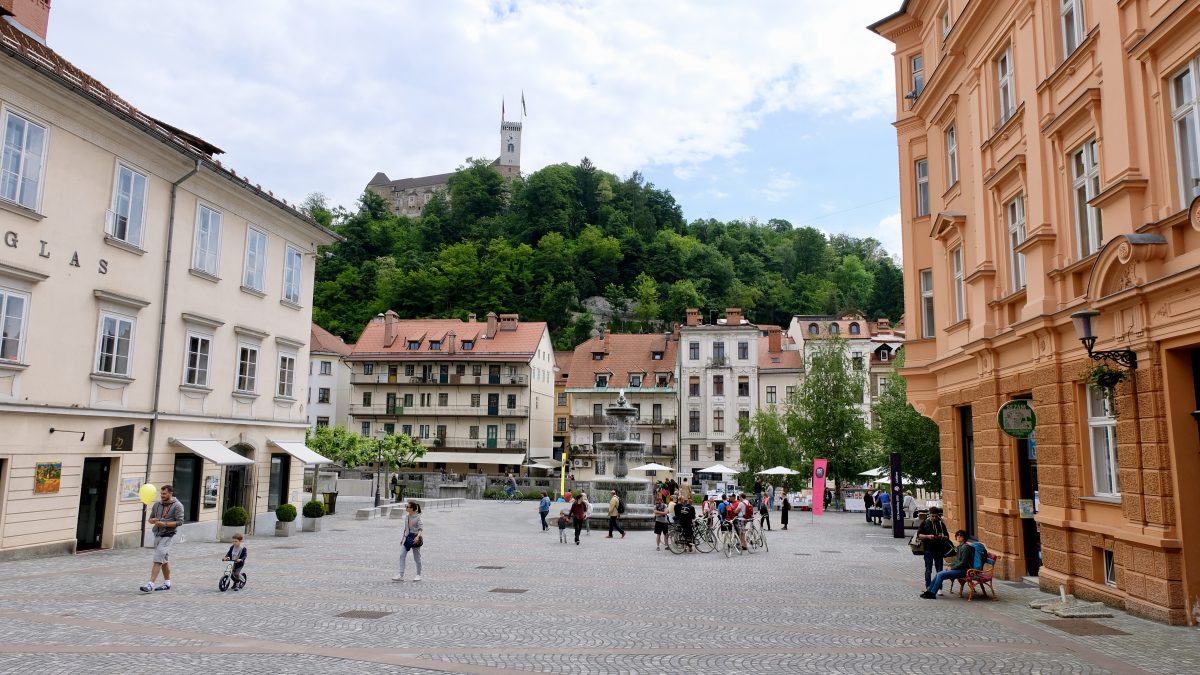
After an excursion to Bratislava in March, the cohort visited Slovenia’s capital Ljubljana and the city of Kranj. As the organizer of the excursion to Slovenia, Yvonne Franz believes that field trips are an important didactical tool in the education of urban researchers. “Engaging with local experts, visiting unusual sites off-the-beaten-track and spending time together in a very compact manner supports an in-depth understanding of the complexities of current urban transformation processes.”
Public space and housing in Ljubljana
Less than an hour after the train from Vienna arrived in Ljubljana, the 4CITIES students received a warm welcome at the city hall from Ljubljana’s Deputy Mayor for Urbanism, professor Janez Koželj. After a brief introduction to the city by discussing its socialist past and recent urban transformations, the Deputy Mayor explained Ljubljana’s strategy for public space. After a short walk through the historic city-center, two lectures were organized at the Architecture Faculty of the University of Ljubljana. The first speaker, Anja Planišček, discussed the topic of housing policy of Slovenia and presented the concept of cooperative housing as a possible solution for the country’s housing crisis. Her talk was followed by a lecture on soft urban renewal and challenges concerning land ownership in Slovene neighbourhood by Alenka Korenjak, architect and co-founder of the organization ProstoRož.
For Niklas Dam, a 4CITIES student from Frankfurt am Main, Alenka’s projects were very inspiring: “It is amazing to see how the people of Ljubljana can achieve great things with a limited budget and with loads of creativity and hard work. I believe that this is especially visible in the work of ProstoRož.”
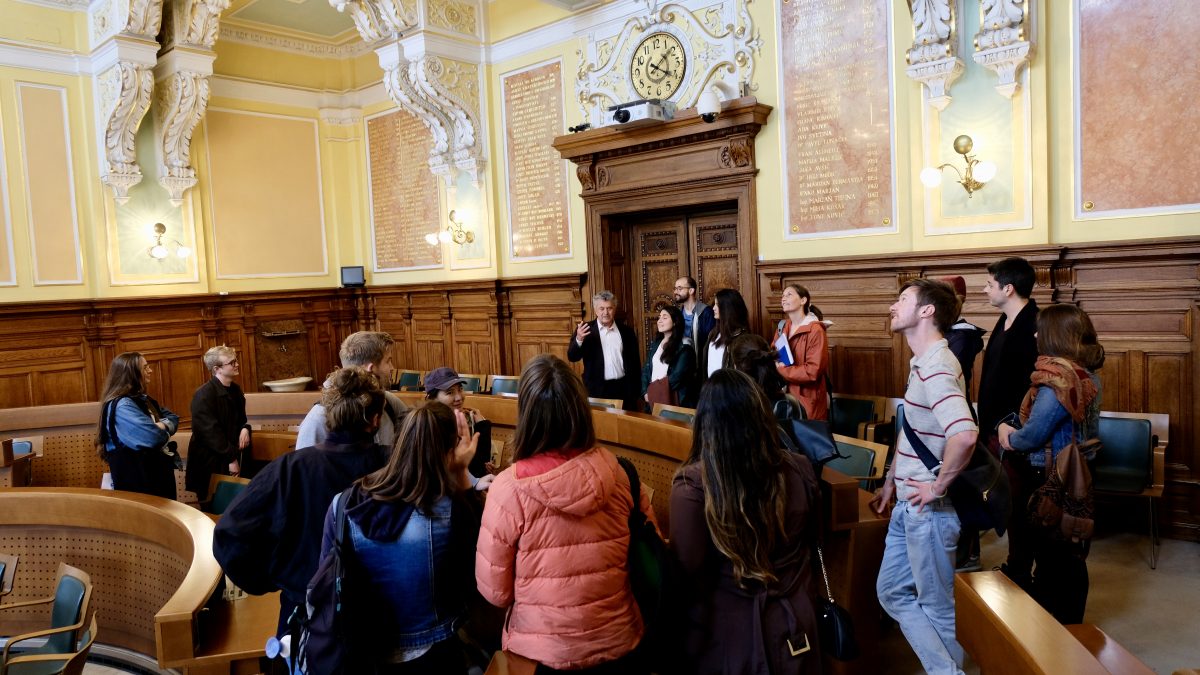
Soft urban renewal and land ownership issues in Kranj
The next morning, the students traveled by train to Kranj (37,000 pop.). In the 4th largest city of Slovenia, the efforts for soft urban renewal and challenges concerning land ownership could be experienced at first hand. In front of Kranj’s town hall, Deputy Mayor Janez Černe welcomed his foreign guests to ‘The Capital of the Slovenian Alps’. After a short tour around the historic core, the bridge dividing the medieval and socialist city parts was crossed. Zala Vidali introduced the group of 4CITIES students to Planina, a neighborhood that was constructed during the socialist-era. Zala showed them around her neighborhood and discussed how soft urban renewal projects can make a big impact on a community level.
Reflecting on the visits to neighborhoods around both Kranj and Ljubljana, James Vandenberg from Halifax, Canada, recalls the enthusiasm of people like Zala Vidali. “People who had grown up in the area wore a smile from ear to ear, proud of the profound community changes that she and her community members were able to make with such minimal resources.” He believes that such “invigorating social innovation” and community bonding clearly illustrate that “the overarching narrative of ecological sustainability, and civic equality, has indeed fueled a new era of citizen empowerment and improved the quality of life for residents”.
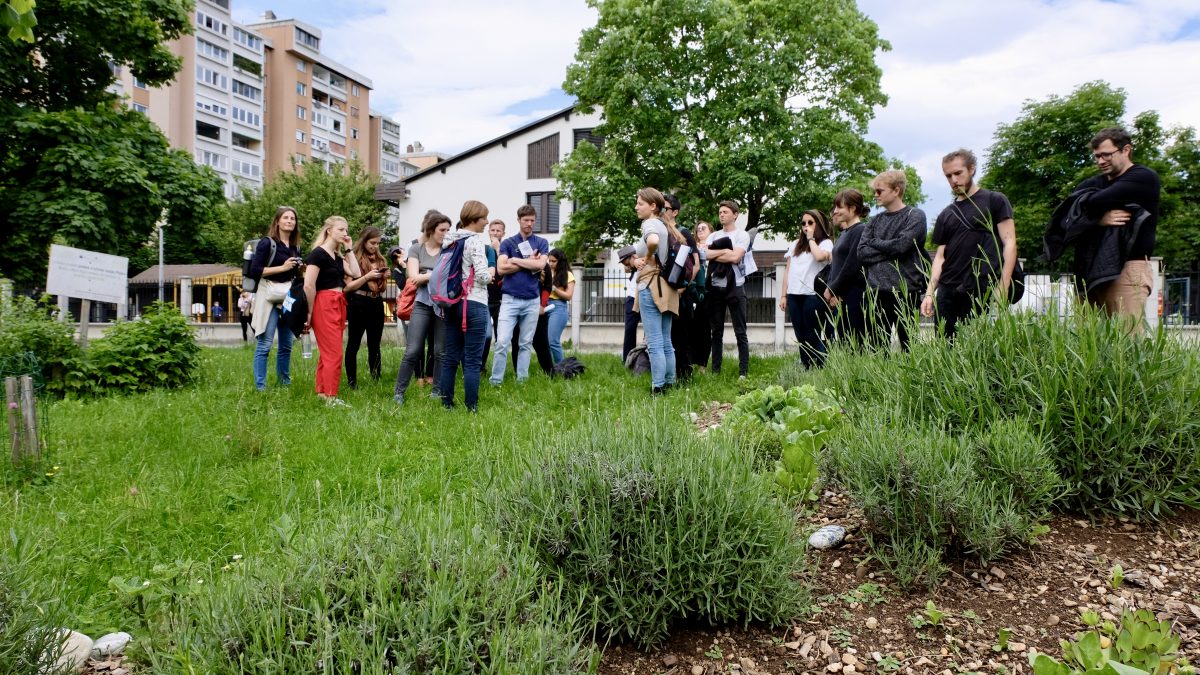
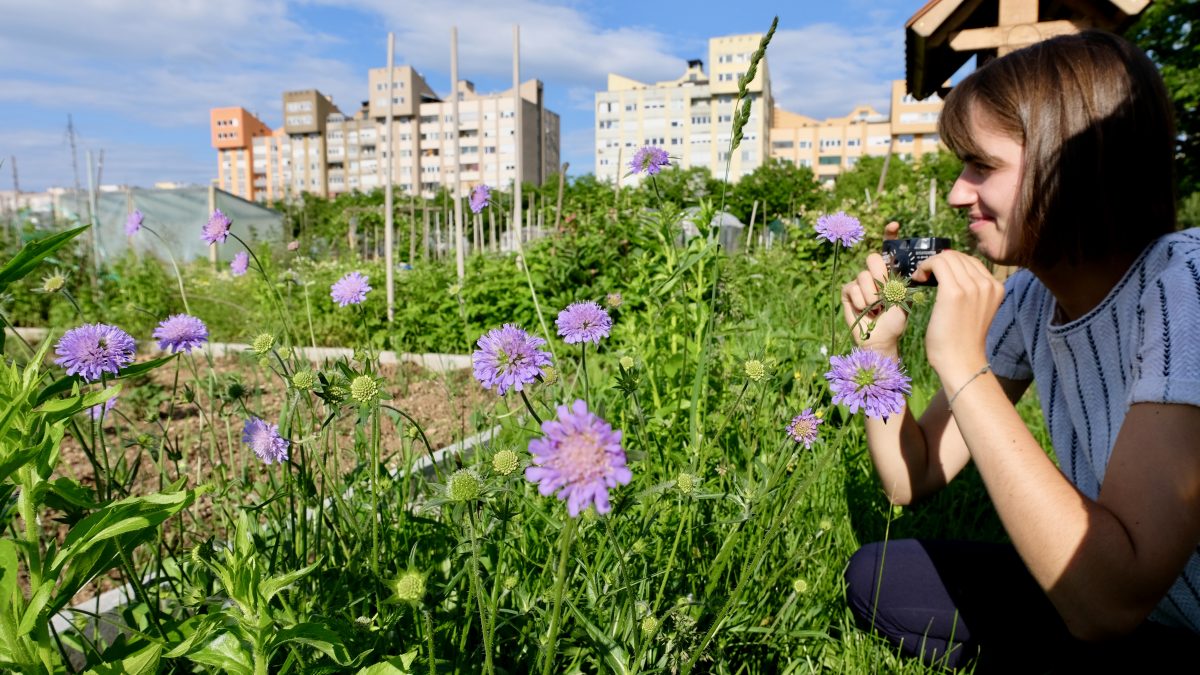
Social innovation in Ljubljana’s socialist neighborhoods
After the morning visit to Kranj, Alenka Korenjak welcomed the group back to Ljubljana for a lunch at her local project Teren. Teren is a temporary use of an abandoned building site next to the train station. The lunch was followed by a tour by Alenka around the ‘Savsko naselje’ neighborhood. In the heart of this community, her organization runs a ‘Library of Things’. As an example of social innovation, this sharing economy initiative offers residents equipment they can borrow and a space to organize activities at. As the last activity of the day, cohort 11 visited the ‘Bratovževa ploščad’ neighbourhood. Architect Damjana Zaviršek discussed the historical context of this socialist neighborhood and showed small interventions in public space and the charming allotment gardens.
“The library of things was a new thing for me”, explains Maria Natalia Alcantara from Anápolis, Brazil, when she reflects on her main takeaways from the Ljubljana excursion. “I had never heard about it before, and I found the idea truly amazing! For me, the initiative is a social innovation project that definitely improves society in how we should think and act in a more collective way.”
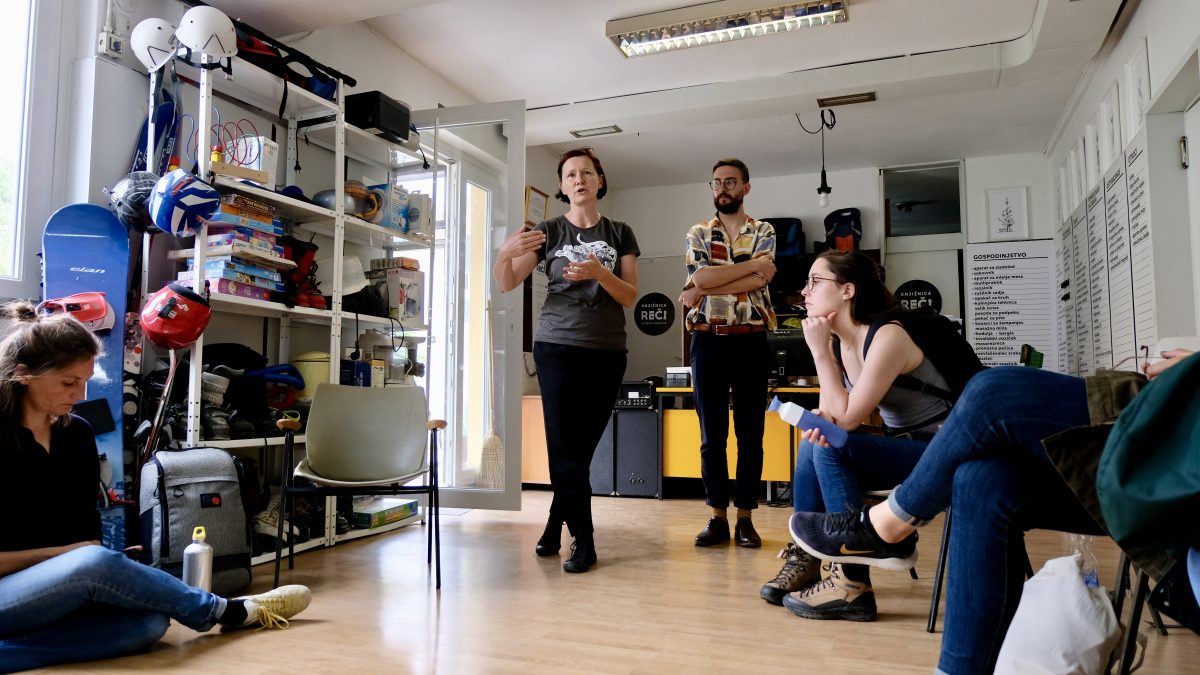
Ljubljana as a green capital and migration in Slovenia
On the last day of the excursion, the 4CITIES students returned to the place they had started their excursion. At the council room of the city hall, Simona Berden from the City of Ljubljana talked about the nomination of the city for the ‘European Green Capital Award’ and urban greenery projects. As the last activity on the programme, Jure Gombac from the Slovenian Academy of Science and Arts discussed the context of migration in Slovenia. Together with NGO Gmajna, he shared moving stories from the Slovenian border and the consequences of the Balkan corridor.
“Being confronted with the migratory reality in Eastern Europe touched the deepest fibers of our emotions”, believes Marcela García from Guadalajara, Mexico. “We should never lose the core values that make us human and humane. Referring to the talk on migration in Slovenia, Marcela believes that we should get outside the classroom and see beyond academia. “Getting involved with reality by mutual learning with migrants and different stakeholders allow a knowledge transfer that we do not have in academia. Or as Jure phrased it, “Production of knowledge is out there!” It is our duty to go out and learn as well.
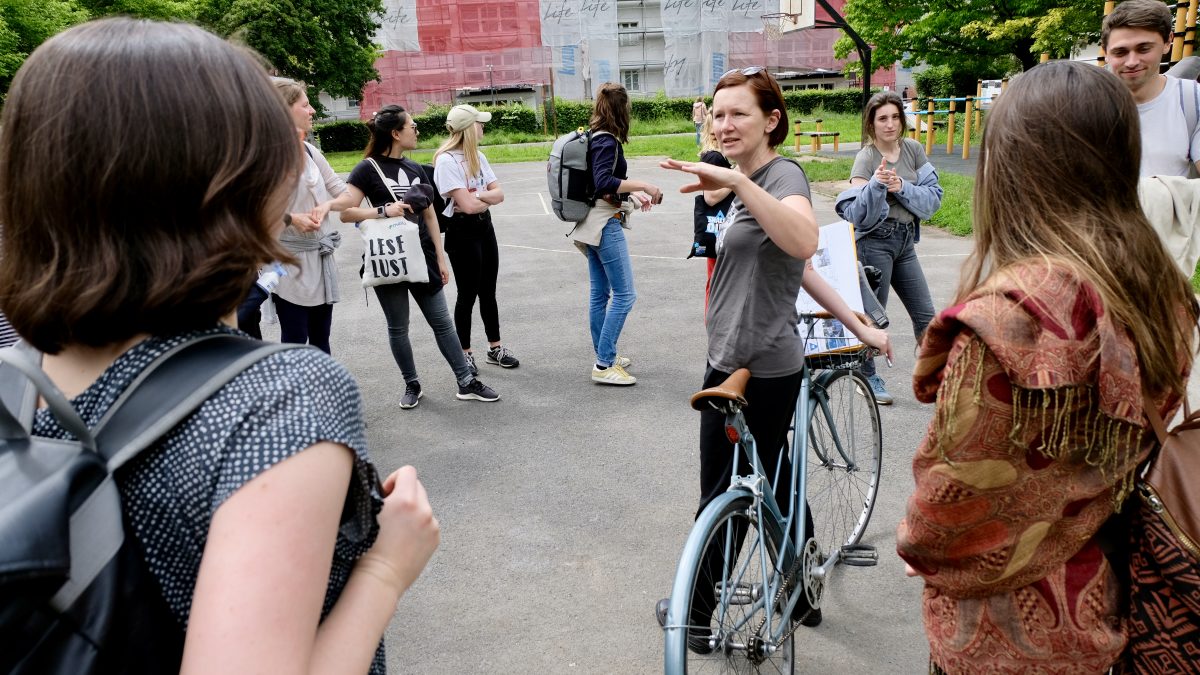
A big thanks from all of us at 4CITIES to course and excursion coordinators Yvonne Franz and Walter Matznetter, the guest speakers, the inspiring and hospitable people who shared their stories and showed us around in Ljubljana and Kranj, and other people we have met along the way.
